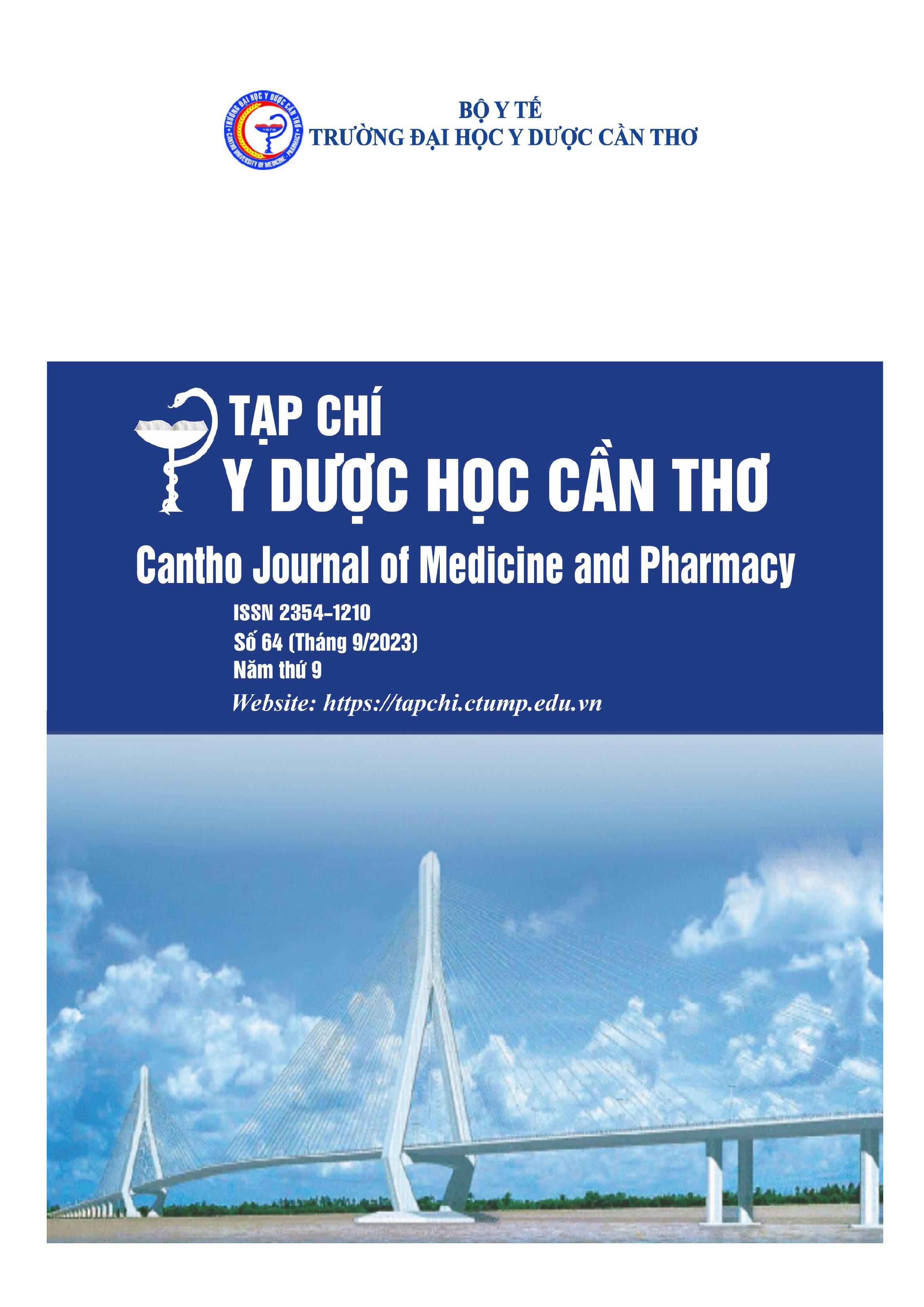BÁO CÁO CA LÂM SÀNG ĐIỀU TRỊ XUẤT HUYẾT TIÊU HÓA TRÊN DO LOÉT TO HÀNH TÁ TRÀNG BIẾN CHỨNG VỠ TÚI GIẢ PHÌNH ĐỘNG MẠCH VỊ TÁ TRÀNG BẰNG THUYÊN TẮC NỘI MẠCH
Nội dung chính của bài viết
Tóm tắt
Vỡ giả phình động mạch vị tá tràng là một nguyên nhân xuất huyết tiêu hóa trên hiếm gặp, và bệnh có tỉ lệ tử vong đến 21%. Chỉ định can thiệp thuyên tắc nội mạch sau khi cầm máu qua nội soi thất bại mang lại hiệu quả cao. Chúng tôi báo cáo một trường hợp vào tháng 9/2022, bệnh nhân nữ, 72 tuổi xuất huyết tiêu hóa đe dọa tính mạng, có ổ loét lớn ở vị trí mặt trước hành tá tràng, tái xuất huyết sau nhiều lần nội soi cầm máu. Túi giả phình ở động mạch vị tá tràng liền kề vị trí ổ loét được phát hiện trên CT mạch máu, sau đó được can thiệp thuyên tắc nội mạch bằng coil kèm NCBA thành công.
Chi tiết bài viết
Từ khóa
Giả phình, xuất huyết tiêu hóa, can thiệp nội mạch
Tài liệu tham khảo
2. N. Habib, S. Hassan, R. Abdou, E. Torbey, H. Alkaied, et al., Gastroduodenal artery aneurysm, diagnosis, clinical presentation and management: a concise review. Annals of Surgical Innovation, 2013. 7(1): p. 1-6. doi: 10.1186/1750-1164-7-4
3. I.M. Gralnek, A.J. Stanley, A.J. Morris, M. Camus, J. Lau, et al., Endoscopic diagnosis and management of nonvariceal upper gastrointestinal hemorrhage (NVUGIH): European Society of Gastrointestinal Endoscopy (ESGE) Guideline–Update 2021. Endoscopy, 2021. 53(03): p.
300-332. doi: 10.1055/a-1369-5274
4. M.-S. Sun, H.-P. Wang, and J.-T. Lin, Gastroduodental artery aneurysm mimicking a bleeding submucosal tumor. Gastrointestinal Endoscopy, 2001. 54(5): p. 621. doi: 10.1067/mge.2001.118137
5. N. Tulsyan, V.S. Kashyap, R.K. Greenberg, T.P. Sarac, D.G. Clair, et al., The endovascular management of visceral artery aneurysms and pseudoaneurysms. Journal of vascular surgery, 2007. 45(2): p. 276-283. doi: 10.1016/j.jvs.2006.10.049
6. T.A. Jaffe, R.C. Nelson, G.A. Johnson, E.R. Lee, T.T. Yoshizumi, et al., Optimization of multiplanar reformations from isotropic data sets acquired with 16-detector row helical CT scanner. Radiology-Radiological Society of North America, 2006. 238(1): p. 292-299. doi: 10.1148/radiol.2381050404
7. F. Pilleul and O. Beuf, Diagnosis of splanchnic artery aneurysms and pseudoaneurysms, with special reference to contrast enhanced 3D magnetic resonance angiography: a review. Acta radiologica, 2004. 45(7): p. 702-708. doi: 10.1080/02841850410001358
8. C. Perez, J. Llauger, Y. Pallardo, E. Sanchis, and J. Sabate, Radiologic diagnosis of pseudoaneurysms complicating pancreatitis. European journal of radiology, 1993. 16(2): p. 102-106. doi: 10.1016/0720-048X(93)90005-8
9. C.T. Sofocleous, C.R. Hinrichs, B. Hubbi, S. Doddakashi, P. Bahramipour, et al., Embolization of isolated lumbar artery injuries in trauma patients. Cardiovascular interventional radiology, 2005. 28(6): p. 730-735. doi: 10.1007/s00270-003-0117-7
10. J.I. Bilbao, A. Martínez-Cuesta, F. Urtasun, and O. Cosín. Complications of embolization. in Seminars in Interventional Radiology. 2006. Copyright© 2006 by Thieme Medical Publishers, Inc., 333 Seventh Avenue. doi: 10.1055/s-2006-941443


